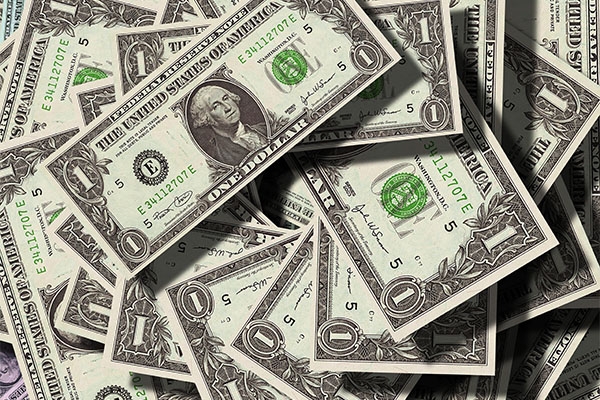Who has the most powerful, smartest, hardest working, and most valuable dollars?
We do.
In our pockets, right now.
As more and more people focus on investment dollars, even more lose sight of the most important verity in personal finance: how we spend our money is at least as important as how we invest it. Learning how we spend our money is also the only way we will ever have any money to invest. In the last three years, consumer installment debt has expanded by $400 billion, a 50 percent increase.
Skeptics should consider a simple test. Of the 7,216 mutual funds that were in operation at the beginning of 1996, how many do you think provided an 18 percent return or better? Exactly 1,803, according to Morningstars’ database. It’s a big number because it was a good year.
Now let’s make it a bit more difficult. How many do you think provided an 18 percent, or better, for five consecutive years?
One. ( Fidelity Select Computers).
And no fund has been able to produce an 18 percent or better return for more than 7 years in a row. In other words, in an entire universe of funds that can invest in anything, anywhere, not one has been able to earn 18 percent, year in and year out the way a bank credit card does.
The dollar in our wallet that pays off that debt is a very powerful dollar. If you are in the 28 percent tax bracket, you would have to invest that dollar and earn 25 percent before taxes, every year, just to pay the 18 percent interest, after taxes.
How many mutual funds can do that more than two years in a row? None.
By simply using dollars to reduce debt, you and I can enjoy the level of returns usually associated with names like Peter Lynch, Warren Buffett, Michael Price, Robert Rodriquez, and Bill Sams.
Are there other powerful dollars in our wallets? You bet.
- Car Loan Pay Down dollars. With auto loans now costing 9.5 percent or more, consumers literally trade a great deal of their working lives to support auto debt. With gross average hourly earnings of $12.14, the average worker now works an hour and thirteen minutes to support $100 of auto debt for a year. With the cost of the average new automobile now over $20,000, the same worker would need to work over six weeks a year just to pay the interest on an average car loan. Borrow less and pay it back faster and you’ll spend less of your life supporting a car.
- Mortgage Pay Down Dollars. With a rising standard deduction and mortgage rates at about 7.5 percent, the millions of Americans who live in older or modest homes with smaller mortgages would have to earn a pre-tax yield of 8.82 percent if they were in the 15 percent tax bracket to cover the interest. While real estate advertisements regularly proclaim that mortgage rates are now “reasonable”, the blunt fact is that you and I can’t find a fixed income investment that will earn what we pay on our home loans. In a universe of 3,700 fixed income funds of all kinds, only 149 offer a yield of 7.5 percent and only 55 offer a yield of 8.82 percent. How do they earn that much? By investing in high risk junk bonds or foreign debt. If you are in the 28 percent tax bracket, the required yield is 10.42 percent. Only two fixed income funds offer such a return, both junk bond funds.
We, meanwhile, have a sure thing simply by putting that dollar into our next mortgage payment.
- Money Not Spent. Suppose you find ways to cut your spending by $1,000 a year. Since you would spend $1082.50, allowing for an 8.25 percent sales tax, you’d have to earn $1,500 before taxes if you were in the 28 percent tax bracket. If you are retired, that means every $1,000 you can avoid spending is the equivalent of having $75,000 invested in stocks that earn a 2 percent dividend yield… or $27,270 invested in bonds earning 5.5 percent. Since the net worth of the median American family is just over $50,000 and the financial assets are significantly less than that, learning how to avoid spending $1,000 a year could be viewed as a ‘portfolio’ worth more than most Americans have.
We have powerful dollars. Smart dollars. We own them. They are in our checking accounts, our savings accounts, and in our pockets. A borrowed dollar is not our friend.
This information is distributed for education purposes, and it is not to be construed as an offer, solicitation, recommendation, or endorsement of any particular security, product, or service.
Photo by Pixabay
(c) A.M. Universal, 1997
